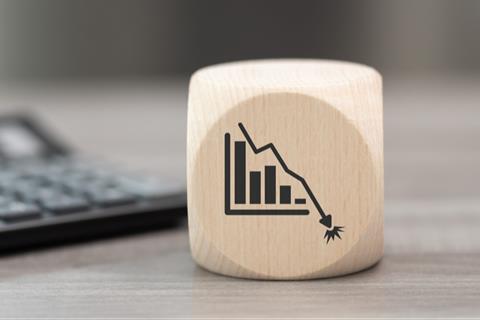Industry still accounts for highest share of insolvencies but growth in firms going bust is the lowest since fall in 2020
The government’s Insolvency Service yesterday revealed that 2024 has seen the lowest year-on-year increase in construction insolvencies since 2021.
While the sector experienced the highest number of insolvencies acoss the economy for the fourth consecutive year, figures covering period from June 2023 to June 2024 show that the rise in construction insolvencies is slowing.

From June 2023, the number of built environment insolvencies experienced a slight increase of 1.9%, compared with increases of 25.7% in 2021, 59.4% in 2022 and seven percent in 2023.
Jo Streeten, managing director at global consulting firm AECOM, said: “An increase in insolvencies year-on-year comes as little surprise, with construction output continuing to fluctuate in recent months. And, with inflation rising in July – for the first time this year – the jury is still out on whether we’ll see a further rate cut in September.
“But there’s reason to be confident that the sector will be lifted by busier work pipelines and infrastructure investment from the new Labour government. The challenge for contractors now will be to manage costs effectively in readiness for an increase in demand while we still face uncertain market conditions.”
While the sector once again accounted for the highest number of insolvencies economy-wide, the proportion represented by construction was slightly lower than previously.
Construction was responsible for around 17% of insolvencies this year compared to other industries - a two percent decrease from 19% in 2023.
Although 17% is the lowest figure the industry has seen in recent years, it has remained relatively steady, rising incrementally from 18.4% to 18.8% from 2021 to 2022.
The other four industries with large amounts of insolvencies were wholesale and retail trade; repair of motor vehicles and motorcycles, accommodation and food service activities, administrative and support service activities and professional, scientific and technical activities.
























No comments yet